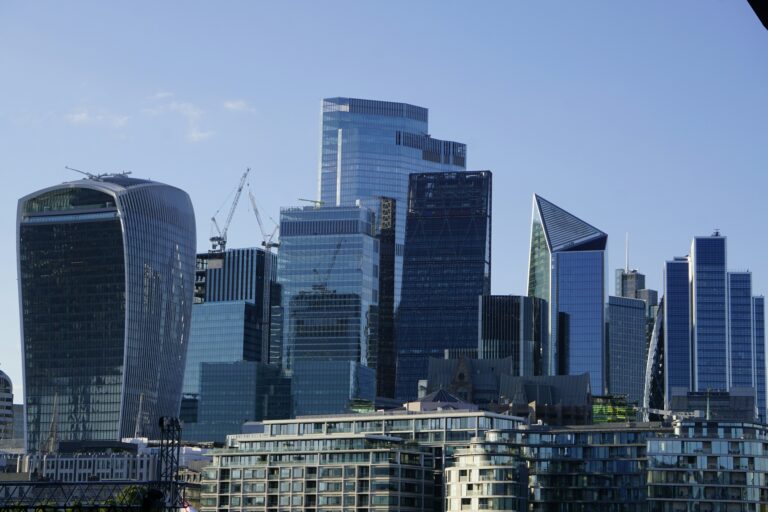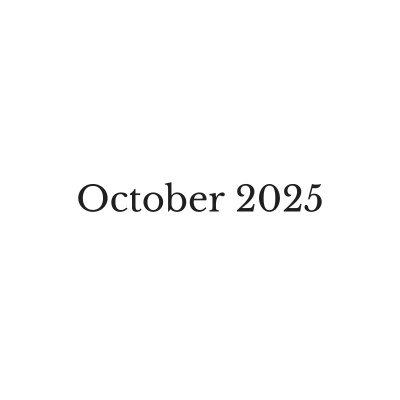FTSE 100 Earnings Week
30/07/25
The FTSE 100 continues trading near record highs as we enter the largest week of Q2 earnings for the index. Seven of the ten biggest FTSE 100 companies by market capitalisation are due to report in the coming days, spanning key sectors including banking, energy, mining, pharmaceuticals, defence, and industrials. AstraZeneca, the largest company by weight in the Index, set the tone this morning after beating Q2 expectations with $14.46 billion in revenue and strong oncology sales in the US. The company reaffirmed guidance, raised its dividend, and highlighted a robust pipeline with 12 positive late-stage trial results, keeping the index on track to maintain its current upward trajectory.
HSBC
HSBC will release its interim results on 30 July, with analyst expectations of a solid but more subdued quarter following blockbuster earnings in 2024. Consensus forecasts call for second-quarter earnings per share (EPS) of around $0.33 on revenue of $16.7 billion—a step up from Q2 2024, when EPS reached $0.31 and revenue of $16.1 billion. The bank’s pre-tax profit is projected to be down approximately 17% year-over-year, reflecting normalised trading conditions and narrower net interest margins in Hong Kong, where recent rate cuts have begun to erode earnings.
Despite these headwinds, return on tangible equity remains elevated—HSBC posted an 18% return in Q1—and net interest income for the full year is expected to remain near $42 billion. Ongoing restructuring efforts in Asia, including the potential divestiture of its Australian retail banking unit will be a focus for many, whilst markets will also be alert to any remarks on US-China tensions, given HSBC’s geographic exposure, and developments in credit quality across its loan book. Shares have surged nearly 50% since last autumn, outperforming the broader FTSE 100.
Rio Tinto
Rio Tinto will also report its half-year 2025 results on 30 July. Expectations are modest: analysts forecast underlying EPS of $3.21, down from $3.54 a year ago. The main drag is commodity prices—especially iron ore, Rio’s core profit driver—which have softened due to China’s faltering steel demand. Even so, Rio’s operational performance has been strong: Q2 saw record bauxite output and the best iron ore production since 2018, with a 13% year-on-year rise in copper-equivalent production volumes.
Market focus has turned to Rio Tinto’s assessment of Chinese stimulus measures and their implications for global commodity demand. Attention is also on the accelerated development of the Simandou iron ore project in Guinea, scheduled to begin shipments by late 2025, and the ongoing ramp-up of the Oyu Tolgoi copper mine in Mongolia. A leadership change is also imminent, with Iron Ore division head Simon Trott set to assume the CEO role from Jakob Stausholm on August 25th. Despite underperforming the broader FTSE 100 year-to-date, Rio’s 6.68% dividend yield remains a magnet for funds and investors globally.
GSK
GSK will report Q2 results on 30 July, with EPS projected around $1.12 and revenue forecast near £7.9 billion. These figures are broadly in line with Q2 2024, reflecting stable performance across its vaccine and HIV therapy franchises. Shingrix continues to anchor its vaccine division, while newer HIV treatments are supporting modest top-line growth.
However, the quarter follows a setback: the FDA advisory committee declined to approve Blenrep, GSK’s experimental blood cancer treatment. Once touted as a potential blockbuster, the rejection dealt a blow to the company’s oncology ambitions. Still, management has emphasised its robust pipeline of 14 late-stage candidates and bolstered its immunology portfolio with a recent $500 million licensing deal for an experimental anaemia drug. Investors will also look for updates on Zantac litigation, which has so far failed to establish a causal link to cancer. GSK shares have risen roughly 20% off their lows but remain well below recent peaks. A low P/E multiple and 4.4% dividend yield may suggest potential for a re-rating if product momentum and legal clarity improve.
BAE Systems
Defence giant BAE Systems also reports on 30 July, and expectations remain high. Analysts see H1 revenue near £14.5 billion, EBIT of £1.52 billion, and EPS around 34 pence, marking solid progress from last year’s comparable figures. With governments around the world expanding military budgets in response to heightened geopolitical tensions, BAE has seen its order backlog soar above £70 billion.
The company has recently secured major contracts, including work on the AUKUS submarine programme and continued development of the Tempest fighter jet under the Global Combat Air Programme with Japan and Italy. Management reiterated its full-year guidance for 7–9% revenue growth and strong free cash flow, despite inflation and some component shortages. Shares are up by approx. 60% in 2025, making BAE one of the FTSE’s standout performers, though some analysts caution that near-term upside may be limited following the steep rally.
Rolls-Royce
Rolls-Royce Holdings will post half-year earnings on July 31st, with investors focused on whether its dramatic turnaround remains on track. After a multi-year restructuring under CEO Tufan Erginbilgiç, the company returned to profitability in 2024, reinstated its dividend, and launched a £1 billion share buyback. Q1 results already suggested strong momentum, and H1 is expected to confirm further gains—particularly in its civil aerospace division, where flying hours have now surpassed pre-pandemic levels.
Analysts will watch for progress on strategic initiatives, including development of Small Modular Reactors (SMRs) and the UltraFan engine program. Though UltraFan remains shelved pending a launch customer, renewed interest from Airbus or Boeing could revive its prospects. With shares trading near £1000, Rolls has gained over tenfold since its 2020 lows and remains one of the index’s most closely watched industrials. Valuation now sits near 33x forward earnings, with bulls betting on sustained margin expansion and improving credit quality.
Shell
Shell will round out the week on 31 July, with second-quarter results expected to reflect a comedown from last year’s record highs. Consensus forecasts call for $0.6 in EPS and revenue of approximately $66 billion, both down year-on-year. Lower oil and gas prices, combined with maintenance issues and weaker energy trading margins, have weighed on performance—though refining margins have improved and may help support downstream results. Shell’s capital return program remains a key focus after the company was set to conclude a $3.5 billion share buyback on July 25th. On strategy, Shell’s recent pivot toward higher-return fossil fuel projects—slowing investment in renewables—has drawn mixed reactions. Updates on LNG Canada, Gulf of Mexico drilling, and refining utilisation will be key. Shares are flat on the year and continue to trade at a low price-to-earnings ratio of approximately 16.75; the stock’s 3.98% dividend yield offers income, but the underlying equity has shown little price momentum.
This article is for informational purposes only and does not constitute investment advice, a personal recommendation, or an offer or solicitation to engage in any investment activity. The mention of any security, commodity, or issuer should not be interpreted as a recommendation to buy or sell. Any views expressed are based on public information believed to be reliable at the time of writing, but no representation or warranty is given as to its accuracy or completeness.
AMT Futures Limited may trade in the instruments mentioned. For full disclosures, please refer to our Trading Notes.





